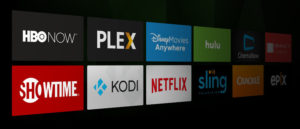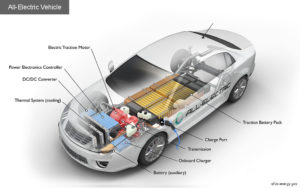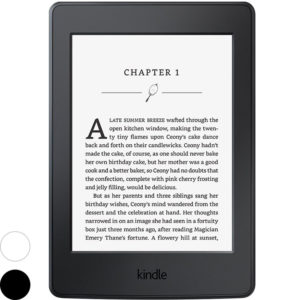* as well as they should.
Some time ago I posted a rant about things that don’t work, at least not as they should (http://billadamsphd.net/2017/04/24/ten-things-that-dont-work/). Those things included cell phones, ice-dispensers, gift cards, and others.
Here’s a list of a few more things that don’t work but somehow, inexplicably, flourish in the market as viable products and services.
- Streaming Movies
 People don’t go to the movies anymore, not in the numbers they used to. They’re ‘staying away in droves.’ Part of that is price, but also the advent of large television screens and home theaters.
People don’t go to the movies anymore, not in the numbers they used to. They’re ‘staying away in droves.’ Part of that is price, but also the advent of large television screens and home theaters.
I hardly ever go to movies anymore, mainly because most movies seem targeted to children and are not for me. But also the journey across town to a theater is an obstacle, and parking, and then the admission price is too high. They can pump up the volume on the sound until the contents of my stomach curdle and it’s still not worth $12.
On the other hand, everyone and their dog now “streams” video online, from Netflix, Amazon, the cable provider, or whoever else is peddling movies. I’ve done it. It’s easy, fast, and cheap.
The problem is the catalog. Having all those movies digitized for on-demand access was supposed to be a boon for people like me, the outlier who doesn’t care about the next superhero and who has had it up to here with explosion movies. It was supposed to be economically feasible to serve ‘long-tail’ customers like me who enjoy thoughtful and artistically done films which are not profitable to the mass market. Hasn’t worked out that way.
I have to spend an inordinate amount of time scrolling through providers’ film lists looking for movies that interest me. It’s all the more difficult because if I click on something I might be interested in, the entire list of movies presented is suddenly changed to emphasize those similar to what I just clicked on, even if (as usual) I reject it. I am therefore not free to pursue my own interests without interference by oxymoronic ‘artificial intelligence’.
For example, I recently got onto a ‘film noir’ kick for a while and watched, and enjoyed, “Night and the City” and “Elevator to the Gallows.” But after that, whenever I want to browse for another movie, I’m flooded with old black-and-whites from the ‘50’s and ’60’s and enough Alain Delon films for a lifetime.
If I want to see (again!) Goodfellas and Silence of the Lambs, no problem. But if I’m interested in “The Conformist,” “Dogville,” or an old Jean Reno movie like “Crimson Rivers,” I have a much more difficult search ahead of me. Those are not movies easily browsed because they do not appear in the endless lists of ‘Most Popular!’ ‘Recent Hits!’ ‘Family Drama!’, and so on. You have to already know about those films by other means to find them online.
 So the reason streaming video doesn’t work is because of the catalogs. They are not well-indexed and tagged and therefore almost impossible to search if you want anything other than the latest cartoon or monster movie.
So the reason streaming video doesn’t work is because of the catalogs. They are not well-indexed and tagged and therefore almost impossible to search if you want anything other than the latest cartoon or monster movie.
My solution is the video store. I’m lucky to have an excellent one near me, clogged floor to ceiling with DVD’s in a broad set of categories. DVD’s are eminently browsable. You can see what’s there with a quick visual scan and read the boxes for details. The cost is the same as online rental. I always come away with a stack of good ones. Alas, I know that distribution model does not have long to live. I don’t know what I’ll do after the place folds.
- Electric Cars
 I recently purchased a smallish second car when my old Scion xB was eaten by rats. They didn’t do serious damage, just nibbled the insulation off some wires, but they got inside the cabin and stunk it up like an abandoned carcass. No amount of carpet shampoo or detailing could make that right. So it was new car time.
I recently purchased a smallish second car when my old Scion xB was eaten by rats. They didn’t do serious damage, just nibbled the insulation off some wires, but they got inside the cabin and stunk it up like an abandoned carcass. No amount of carpet shampoo or detailing could make that right. So it was new car time.
I looked seriously at an electric car and I considered the top hybrid models as well. Many of them are attractive. However, in the end, I bought a small, internal-combustion-engine hatchback (Chevy Sonic).
Electrics have not yet arrived, in my opinion, despite the hype. For one thing, they are quite expensive and even with the government subsidies, which are fast declining, you pay a hefty several-thousand-dollar premium for the privilege of going electric (or hybrid). But I looked past that.
Another problem is the batteries themselves. What am I buying there? It is extremely difficult to get information about the batteries, what they are, how they work, whether they are safe, how long they are expected to last, and so on. I supposed those are all “proprietary” secrets but call me old-fashioned, I want at least some concept of what I’m buying.
 I learned, for example, from a garage mechanic, not from any online research, that the battery packs in a Toyota Prius cost about $5,000 to replace, and there are two of them. They last about five years, putting out less and less power with each charge until finally you have to replace them. Maybe the car is only designed to last 5 years, but in my mind, that’s a $10K hidden cost of ownership that does not appear with the sticker price. I don’t know what the comparable numbers would be for a Bolt or a Volt or a Leaf, or any of the others, and nobody will say.
I learned, for example, from a garage mechanic, not from any online research, that the battery packs in a Toyota Prius cost about $5,000 to replace, and there are two of them. They last about five years, putting out less and less power with each charge until finally you have to replace them. Maybe the car is only designed to last 5 years, but in my mind, that’s a $10K hidden cost of ownership that does not appear with the sticker price. I don’t know what the comparable numbers would be for a Bolt or a Volt or a Leaf, or any of the others, and nobody will say.
Also, you cannot just park an electric vehicle in your garage and expect it to perform when you need it. The electrics are designed to be driven, the batteries discharged and charged continuously. I only use my second car a few times a week for errands around town. Most of the time it stays parked. But that’s no good. If you don’t drive an electric every day, the battery can go flat, and once it does, it cannot be revived. The electrics are designed for commuters, or at least for some kind of a hectic lifestyle I don’t engage in anymore.
The “range anxiety” problem is gradually reducing, and is not even a serious problem with the new hybrids. Charging stations are popping up all around down, though I still would never try to drive an electric from Tucson to Los Angeles.
Finally, nearly all electricity in my part of the country comes from burning coal, so there is no environmental benefit from going electric, so that’s not even a consideration.
I think electrics are the future, more so than hydrogen power, but that future is still quite a ways off. Electric cars are a product that’s not quite there yet.
- E-Books
 I have several Kindles and I also sometimes read e-books on a tablet, but every time, it’s an unpleasant experience.
I have several Kindles and I also sometimes read e-books on a tablet, but every time, it’s an unpleasant experience.
The main problem with e-books is navigation. You can’t easily see where you are in the book, can’t easily glance ahead or behind. It’s not easy to flip to the footnotes or the index or the table of contents, and if you do, you most likely will lose your place. Reading an e-book is like reading through a soda straw.
I use e-books when there are few, or no alternatives. One common case is for a book that costs too much in paper, which I consider to be over $30 or so. If I can get an e-book for $10 that costs $50 otherwise, I do it. That doesn’t come up as often as it used to, since E-books are now priced almost the same as paper, just a few dollars less usually, so I buy the paper.
A second good use of e-books is for textbooks. When I was teaching, I was loathe to lug around a six-pound, thousand-page book of statistics, but I had to do it. When textbooks finally became available online I switched to that medium and I could carry three or ten reference volumes around with me. A lifesaver.
However, for most reading, novels, popular nonfiction, and so on, there is no advantage to an e-book and plenty of disadvantages. The main downside, as noted is the tunnel vision. A book is a Gestalt, a whole experience, from thumbing through the pages to writing in the margins. An e-book is only good for processing sentences, one at a time, a charred ember of the full reading experience.
Yes, you can, in principle, enter highlights and underlines into an e-book, but try to access those later. It is possible, but certainly it is not easy to quickly survey the parts of the book you noted for later reference. You essentially have to re-read the book page by page to find your highlights. A list of highlights in themselves are without context. There is a reference number with each highlight so you could find the textual context if needed, but good luck with that.
Likewise, marginal notations are useless in an e-book. It used to be possible to export all your notations into a file that could be word-processed into contextual relevance, but I don’t think that’s possible anymore. At least I haven’t been able to figure it out. And as with highlights, your notes are out of context, just a list of nonsequiturs. Their accompanying “reference numbers” are not actual page numbers, so you don’t even really know what part of the book the note is from.
Finally, a paper book will sit on my shelf and stare at me. If I haven’t read it, it will nag me. If I have read it, it will call me back into memory, either good or bad. The spine, the cover, the title, the cover art, the size and shape – all of it triggers associations, thoughts, memories. Old books are like old friends. New books are exciting promises. E-books are like mummies – out of sight and out of mind.
So I admit there is a place for e-books and it is a technology that serves a purpose. Yes, you can quickly look up words in the dictionary in an e-book (if the dictionary has your word in it), and yes, you can enlarge the font size. These are positives.
Alternatively, you can load a dictionary app, or several of them plus an encyclopedia, and really find out what your mystery word means, and you can buy a pair of drugstore readers to enlarge the font of any book.
 Reading a book, for me is a whole-body immersive experience that an e-book just cannot deliver. E-books are enormously popular because the producers of books love them. The incremental cost of production is very close to zero. How wonderful for them. For me, the benefits are just not there.
Reading a book, for me is a whole-body immersive experience that an e-book just cannot deliver. E-books are enormously popular because the producers of books love them. The incremental cost of production is very close to zero. How wonderful for them. For me, the benefits are just not there.
